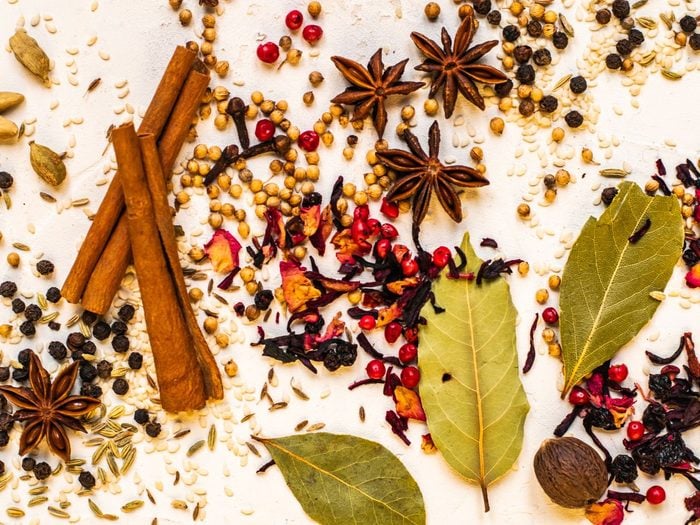How to Cook Curry, the Ultimate Winter Comfort Food

A registered dietitian shares what you need to know about making curry at home
Turning the corner into a new season means shifts in your wardrobe, weekend hobbies and food cravings. Curry, a comfort food for many, is the perfect way to warm up and is as filling as it is satisfying.
Curries are a true melting pot of flavours from multiple continents. While curries originated in India, many of their distinct tastes come from ingredients, like chilies and black pepper, that were introduced by Portuguese and British settlers. Eventually, these dishes evolved into the curries we know today. Most curries start with the same base of onions, garlic and ginger, but the blend of spices is what makes each curry unique.
The health benefits of curry
The health benefits of curries are touted in Ayurveda, the ancient medicine system that aligns living practices and eating habits with the seasons. During the winter, rituals are centred on warm food and beverages and sour, salty and sweet flavours. According to Ayurvedic medicine, “hot” foods can include tomatoes, ginger, onions, mustard, pepper and ghee, which are thought to improve digestion and circulation. While Western medicine doesn’t align with this seasonal eating strategy, there are some proven health benefits to eating warm (and warming) foods.
Cooking fruit and vegetables breaks down some of the food, which gives the digestive process a head start. Heat can also make the vitamins and minerals from the cooked foods easier to absorb because your body doesn’t have to work as hard to break them down to release their nutrients. For some vegetables, cooking can also increase the amount of health-boosting compounds in them. For example, cooked tomatoes contain higher levels of lycopene, a compound with anti-inflammatory benefits.
Taste starts with scent, and because heat encourages food to release its aromatic compounds, we often perceive cooked foods to have more flavour and feel more satisfying. We are also forced to eat hot food more slowly, which aids digestion and helps prevent overeating.
The best spices for curry
The spices you choose for your curry can also lend additional benefits. Curcumin, the primary compound in turmeric, is a potent antioxidant. It’s enhanced when paired with black pepper and a fat source, which help your body absorb it more efficiently so you can take full advantage of its effects.
For a flavourful curry, the ground coriander that’s been sitting in your spice cupboard for the past two years isn’t going to cut it. Whole spices have a longer shelf life than ground spices, as a spice’s flavour begins to evaporate immediately after the grinding process. To keep your curries punchy, lightly toast and crush whole spices and use heat to make them shine. Always gently heat spices for a minute or two along with your curry base at the beginning of cooking. Blooming the spices in hot oil or another fat before adding in liquid ingredients further enhances the flavour, so they’re powerful enough to perfume the entire sauce. Masalas (aka spice blends) can also be turned into a paste by blending with water or vinegars to create a savoury, freezeable base for soups and stews, or even a marinade for meats and seafood.
How to cook curry like your favourite restaurants
Curries can be simple dishes, but there’s plenty of ways to jazz them up with toppings. Some of my go-tos are a dollop of Greek yogurt, a smattering of fried shallots and a handful of chopped cilantro. I’ll even borrow a condiment from Chinese cuisine and drizzle on some chili crisp for a sweet-hot crunch. Curries are best when there’s a bit of sourness to balance their richness. In India, cooks will sometimes add amchoor, a tart spice made from green, under-ripe mangos. For the same effect, I like to add a squeeze of lemon or lime juice right before serving for the perfect endnote.
Ready to give it a go? Try this spicy and tangy chana masala recipe.




